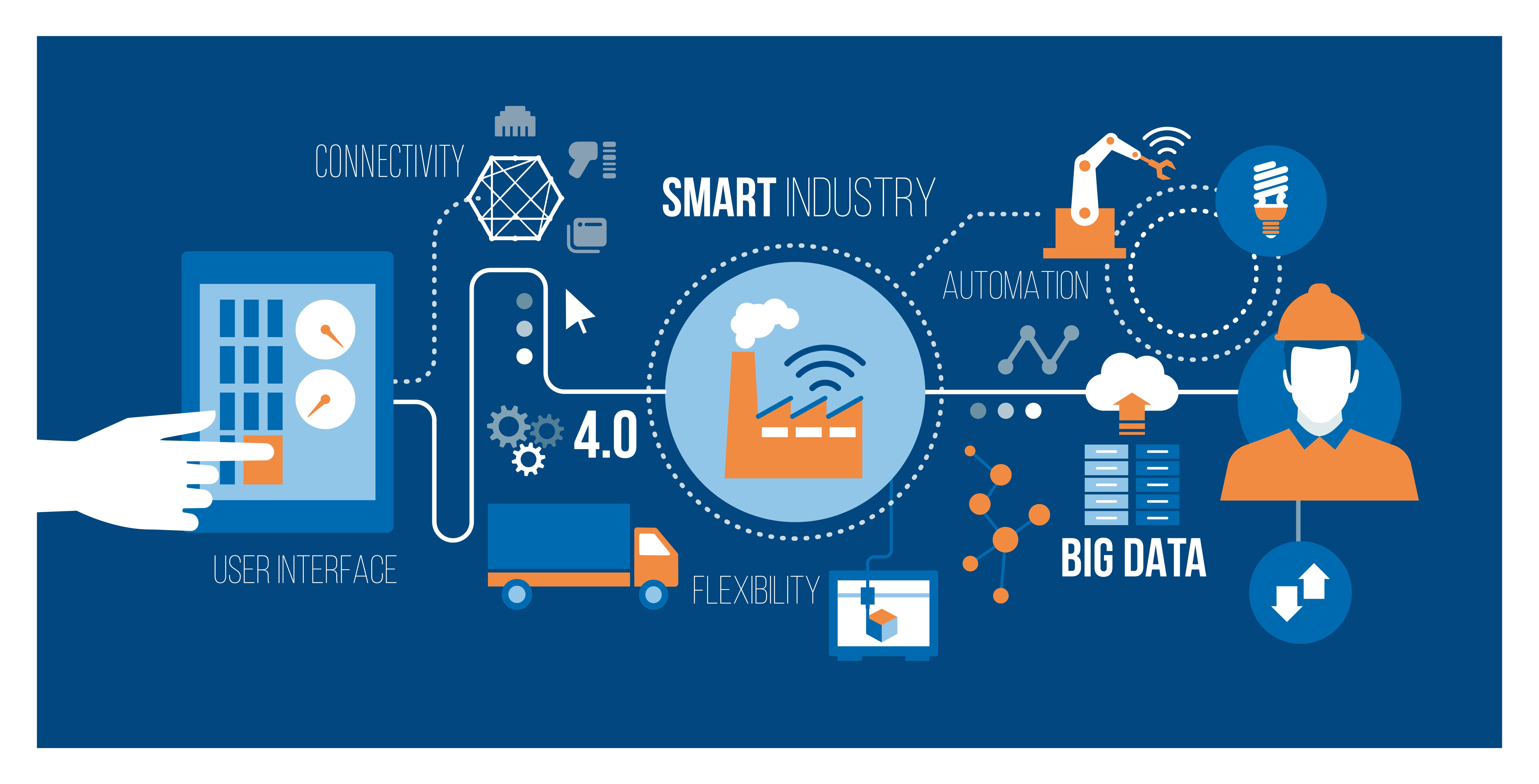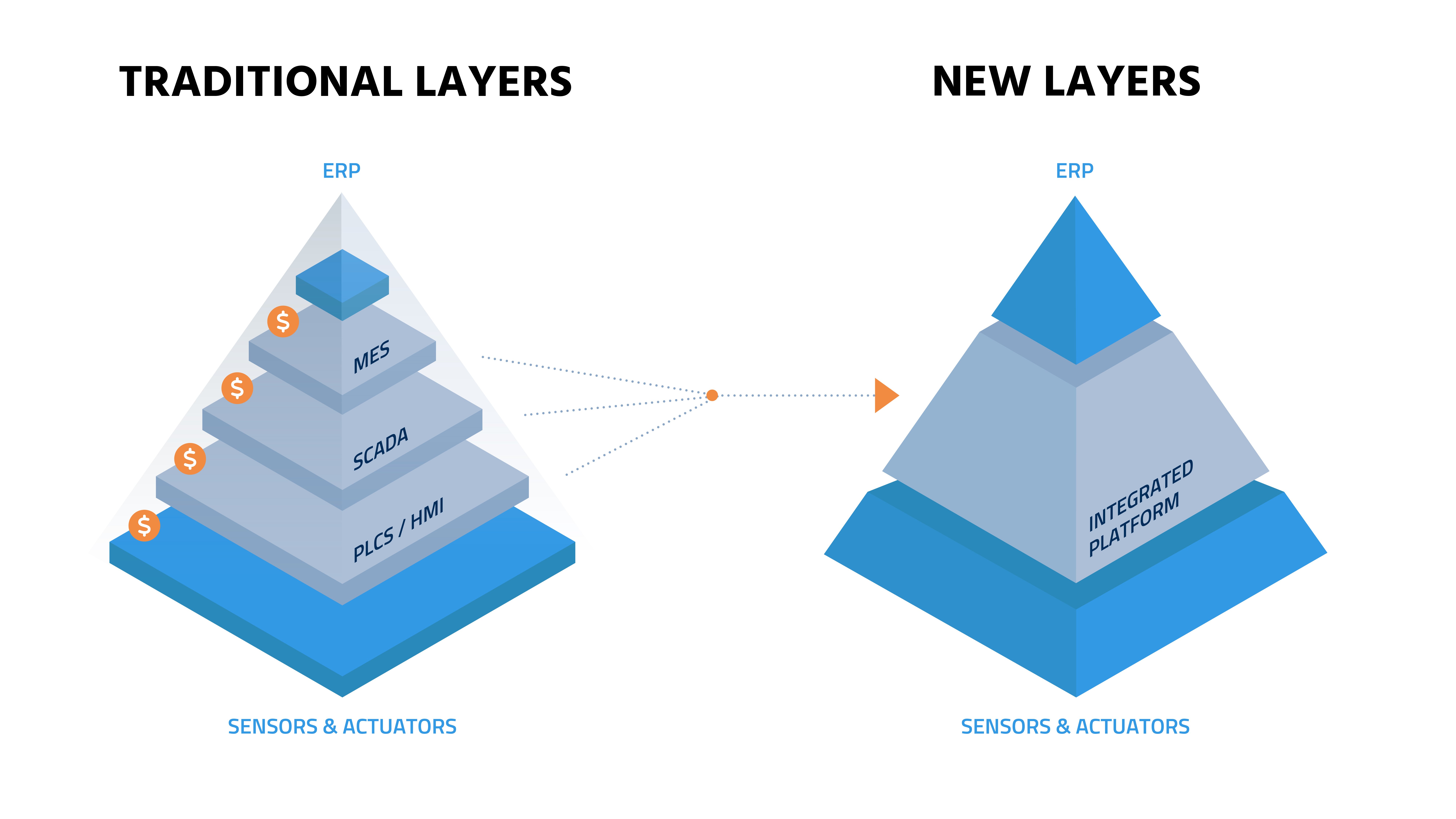The Current State of Manufacturing and How Technology Will Accelerate Digitization
by Tina Kennedy, on Mar 24, 2022 5:18:15 PM
Modern societies have digitally transformed over the past three decades at exponential rates. In the 90s there were approximately 11 million cell phone users and according to Statistica, that number has risen to approximately 7.1 billion users globally today. We now have instantaneous access to information and people at our fingertips. And while web-based technologies and Industry 4.0 has begun to revolutionize manufacturing, the transformation has occurred at a much slower pace. However, given the current state of manufacturing we will likely see digital priorities escalate even with fewer available resources along with a cultural shift on the plant floor for greater acceptance of new technologies.
The Current State of Manufacturing
Many factors have had a profound impact on the current state of manufacturing and the Covid-19 pandemic accelerated many of them. Below we will outline a few key issues.
Supply chain instability
Supply chain disruptions have impacted production for manufacturers globally, with some facilities halting production entirely for intermittent periods of time due to a lack of parts and components. The increased cost and time of transporting goods has also had a significant impact on the bottom line. Companies are now faced with rethinking their supply chain structures. Do they reshore facilities closer to their customer base, moving lower labor rate jobs to higher labor rate markets? Do they integrate supply chains within their infrastructure to alleviate future shortages?
While large companies have the resources to integrate supply chains and negotiate better transportation costs, this will remain a competitive challenge for smaller manufacturing facilities. Moving forward, companies will be forced to find ways to increase efficiencies in logistical needs and services.
Labor shortages
Reduced labor availability, hiring challenges and the Great Resignation is by far one of the largest challenges manufacturers face today. According to a 2021 study by Deloitte and The Manufacturing Institute, the manufacturing skills gap in the US could result in 2.1 million unfilled jobs by 2030. Preparing for the future of work to resolve talent scarcity will be a necessary requirement for organizations in order to remain competitive.
While robots and automation will expand to fill the gap, human labor will remain a critical component for success. Manufacturers will be tasked in determining what technologies will help enhance human engagement, collaboration, fast-track training and reduce errors within their facilities. Just as the phone has transformed societies, new technologies will transform manufacturing and how operators work with greater levels of clarity and efficiency.
Culture
Manufacturing has often been perceived as a repetitive, monotonous job that requires working in dirty factories. Recruiting operators, engineers and IT specialists can take much more effort than those of a flashy, high tech Silicon Valley company with deep pockets. The younger generations have also grown up with technology and view it as a part of everyday life. As manufacturing digitizes and evolves into a more modern environment, recruiting new, tech-savvy talent may become easier.
Change, in and of itself can be one of the biggest hurdles to staying competitive in the industry as well. Manufacturing has had deeply ingrained ways of doing things for decades that have worked, and if a company has had steady growth or remains profitable they may not see the need for change. Why invest money and time into something that may not work or cause unnecessary problems. And while some companies are reluctant to change, others are paving new pathways, adopting Industry 4.0 initiatives and will eventually gain a competitive advantage. Embracing change with a shift in management mindset will be necessary in the new digital, data-driven era.
Limited or aged technologies
Industry 3.0 brought computer technology and more automated systems to the assembly line in the late 1960s with the introduction of programmable logic controllers (PLCs) and Supervisory Control and Data Acquisition (SCADA) systems. By the mid 80’s and early 90's Manufacturing Execution Systems (MES) and Enterprise Resource Planning (ERP) systems were starting to be utilized. While each of these traditional ISA-95 layer technologies have helped innovate manufacturing, the cost of implementing and maintaining the separate systems is expensive and labor intensive – from hardware and integration costs to programming and data analysis needs. Each layer requires a unique skill set, and often, an outside vendor relationship to help run and maintain the systems. With the decreased availability of skilled workers, the infrastructure may become more difficult to support in the future.
And while many of the traditional layers produce valuable data, that data is often siloed, making it more difficult for data exchange. Incomplete views of essential business information and a lack of data transparency makes it more challenging to identify outliers, inefficiencies and improvement needs.
Technology Changes Accelerating Manufacturing Digitization
Industry 4.0 is now bringing the next generation of technologies to the plant floor with cyber-physical systems (CPS), cloud computing and the Industrial Internet of Things (IIoT). These new technologies provide a more practical tech framework for digital transformation, requiring less resources and a lower cost point of entry.

Connectivity and Web-Based Systems
Industrial ethernet has come a long way since the 1970s. The world now runs on ethernet with many homes now utilizing it for wifi connections. As the internet has progressed, ethernet has become more affordable, reliable and robust, with more available protocols for connecting devices. As Industry 4.0 adoption progresses, ethernet use will expand further due to its easier scalability and greater bandwidth compared to other networking protocols such as fieldbus.
Ethernet and web-based technologies have revolutionized what can be done on the plant floor. In the past when an engineer wanted to make a change in the manufacturing process they would have to write a program and then propagate that program from controller to controller. In a web-based environment they can now make changes and apply them quickly throughout the plant via a web browser. Web-based systems are more flexible, require less maintenance, and have faster deployment than older PC or HMI based application systems.
MQTT (Message Queuing Telemetry Transport)
The MQTT networking protocol was invented in 1999 and its industry adoption and use has rapidly increased over the past two decades because of its suitability for machine-to-machine, Internet of Things (IoT), and mobile applications. With its lightweight pub/sub messaging transport capabilities, small code footprint and minimal bandwidth, it is becoming the standard messaging protocol for connecting devices on the plant floor. In addition, authentication and encryption over SSL are supported for security which is of growing concern for manufacturers today.
The Internet of Things (IoT)
IoT technologies have exploded over the past decade and interconnected devices exist all around us today. Wearable technologies and smart watches that connect to your virtual assistant are made possible by IoT. Industrial IoT takes that digital interconnectivity we’ve come to depend on and applies it to manufacturing operations.
IoT interfaces fundamentally allow manufacturers to connect and control devices via standard internet communication technologies. Companies now have industrial control and measurement products available that leverage MQTT or HTTP to allow better control and data gathering from their devices. Likewise, these devices may have web page visibility. Additionally, some newer smart devices are becoming available that allow for control and data gathering via a low programming language such as Node-RED. These devices then connect to servers where the data can be used and shared with other IoT devices. The continuous collection of real-time data from devices and industrial equipment can provide manufacturers with valuable operational insight, leading to greater levels of efficiency, quality, safety and predictive maintenance.
Integrated Software Platforms
Currently, many smart devices come with their own dedicated user interface, app or system and the different vendors often don’t work in conjunction with one another. However, as technology advances, web-based software platforms are now developing industry standards to easily connect various devices and control the industrial process while collecting granular data. These new, flexible, integrated platforms are displacing traditional layers on the plant floor and require much less resources to maintain. They will act as middleware between the hardware-based, IoT device and gateway layers and the upper level business systems.

Industry 4.0 – Getting Started
Manufacturers of all sizes, even those that are not traditionally tech savvy can now join the Industry 4.0 movement as systems become more affordable, easier to use and implement and require less skilled labor. Companies with limited to no technology use on the plant floor may have an advantage when starting their digital transformation as they will be able to start from scratch, building out their infrastructure in tactical steps with newer technologies. While companies that have embraced technology in the past with older tech stacks are at somewhat of a disadvantage to change to more modern technologies, it can be done.
The goal is to get started – start small and scale out your digital initiatives as you garner a return on your investment. For example, a first step might be to create digital work instructions to expedite training. As onboarding becomes quicker with increased productivity and new efficiencies, scale out to other areas of the assembly process. Error proof your process, gather part traceability data for recall or compliance needs and begin integrating IoT devices into your assembly process for quality and predictive needs. Utilize an internal champion to push projects forward and create a positive paradigm shift to a better technical and data sharing environment.